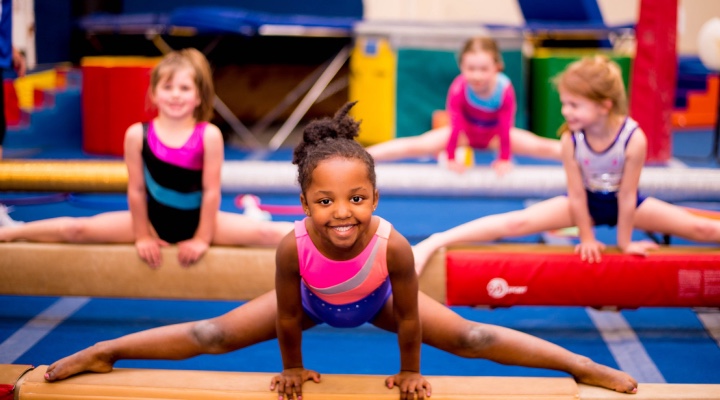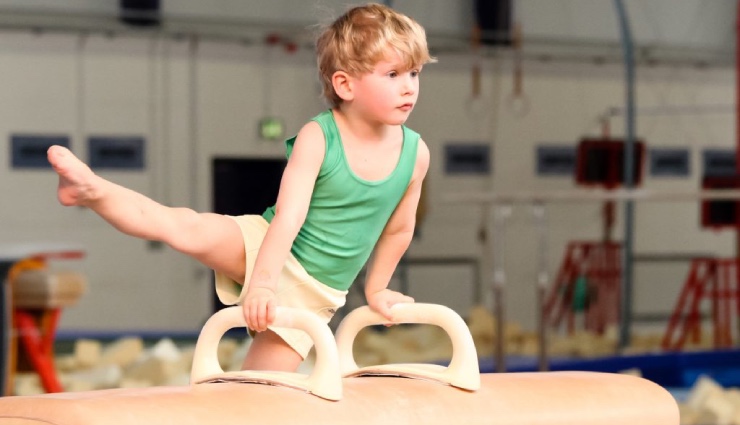Have you ever seen children’s gymnastics? Gymnastics is a dynamic and engaging sport that children can learn. Children practice strength, flexibility, and teamwork in this sport, increasing their self-confidence. In this article, we go into the exciting world of children’s gymnastics and read valuable and practical information about it. Stay with us.
What is child gymnastics?
Gymnastics is a sport that improves speed, strength, flexibility, coordination, and balance. This sport, which requires practice and skill acquisition, is suitable for both girls and boys and is considered an excellent sport for improving balance, fundamental motor skills, and children’s coordination. Experts recommend starting gymnastics at a young age. Most of those who start gymnastics from childhood continue this sport until adulthood.
At what age should children start gymnastics?
There are no specific rules for starting gymnastics. Some coaches teach children from 2 years old, and some say you should wait until they are teenagers. According to research by the American Academy of Pediatrics, children between 2 and 5 can start gymnastics. Children’s movement skills develop at this age, and gymnastics improves their nerve and muscle coordination. Gymnastics is taught at this age to play and learn simple movements. According to this research institute, children aged 6 to 9 years have better learning ability, and progress should be expected during this period.
Before enrolling your child in a gymnastics class, you should assess his readiness. If your child can participate in different courses, is trainable, and is interested in sports, you can take him to gymnastics classes. Experts say it is better to consider a trial session for a child under five years old. Take her to gymnastics class to see if she can start this sport.
Benefits of gymnastics for children
Gymnastics has many physical and mental benefits for children. It doesn’t matter if your child follows this sport for fun or seriously. Gymnastics teaches children valuable skills, from increasing balance and physical strength to raising awareness of your body and social skills. In the following, we examine the most essential benefits of gymnastics.
1. Improve health
When your child exercises regularly, he will be in better health. Gymnastics reduces the risk of heart disease and diabetes and prevents performance decline in adulthood. According to research, children who do gymnastics are less prone to osteoporosis.
In addition, gymnastics makes it easier to burn fat, and your child will not be overweight. Participating in gymnastics classes also improves the child’s sleep.
2. Increase physical strength
Experts say that gymnastics is the foundation of other sports, so if you did gymnastics as a child, it would be easier for you to become interested in any sport as an adult. The exercises of this sport are performed with body weight and increase the strength of central muscles, upper body, and lower body. Gymnastics exercises from a young age give children muscle strength and endurance, improve their balance and skill, and increase their mental strength.
3. Improve social skills
Participating in gymnastics classes creates healthy habits in children and allows them to communicate with their peers. Children learn to do group activities and interact socially with other children. Sports classes teach children to be disciplined, stick to and respect the rules. Children get motivation from their friends and build healthy relationships with their teachers.
4. Learning order
The gymnastics class is an ideal environment for learning games and sportsmanship. Children who do gymnastics have regular exercises and work for years to reach their goals. They learn to strive and persevere to achieve their desired state. In these classes, kids learn commitment, loyalty, and teamwork, so even if they don’t continue the sport, they’ll have good judgment and collaboration in the future.
5. Overcome fear
Some gymnastic movements are scary for children. In addition, most children are afraid to try new things. Gymnastics encourages a child to overcome their fears and try exciting things under the supervision of a coach. The gymnastics coach provides different challenges for the students in each class and helps them learn new moves. With this approach, children learn that they can achieve goals far from their minds and succeed with practice and patience. Such a skill is helpful for them both in sports and in life.
6. Mental development
The benefits of gymnastics are not just physical. This sport increases children’s concentration. In gymnastics classes, the connection between the brain and the body will be strengthened with each exercise, and the child’s coordination and balance will increase over time. Researchers say the correlation between children in the same class is also beneficial. They learn friendship, cooperation, and commitment in sports classes, and these skills stay with them forever.
7. Mastery of the body

One of the critical factors in gymnastics is flexibility. Children do various stretching exercises to have a flexible and muscular body. Increasing the range of motion and flexibility of muscles prevents physical injuries. Gymnastics teaches children to walk, run, and jump properly. When your child learns gymnastics, he gains more control over his body, recognizing and avoiding risky situations.
8. Mood improvement
Parents want their children to have healthy and helpful entertainment. Gymnastics is one of the most fun sports. In this sport, children are active, and jumping and swinging attract them. Participating in gymnastics classes releases endorphin hormones in children’s bodies. As a result, they feel happy and have a better mood at home and school.
Disadvantages of gymnastics
Gymnastics has many positive features, but some experts say it may also have risks for children. Their research seeks to answer important questions, such as whether gymnastics harms children long-term. In the following, we will examine some negative features of this sport.
1. sports injury
Sports injuries can happen in any sport and age, but gymnastics has the highest injury rate among children’s sports. According to research, out of every five children who do gymnastics, one of them is injured in this sport.
2. Emotional pressure
According to research, expecting too much from children can make them resentful. If your child does not have enough physical fitness and you wish to see significant progress, the child will experience anxiety, frustration, and dissatisfaction. He does not know how to deal with this mental pressure and may become frustrated.
3. Interference goals
Children should have enough time to play and have fun. Children’s gymnastics aims to improve motor skills and learn group play. Children who play professional sports have different plans than their peers. They participate in competitions and try to win, but these goals are inappropriate for the child. They are put under pressure, and unhealthy habits are institutionalized in them. As a parent, you should know that gymnastics is fun and educational for children, and your child is not supposed to do hard and exhausting exercises in this sport.
last word
Every parent wants to have a healthy and prosperous child. Gymnastics has many benefits for children. This sport improves children’s motor skills and teaches them valuable social skills. This exciting sport develops children’s self-confidence, resilience, physical strength, agility, flexibility, balance, cooperation, dedication, and discipline and prepares them for adulthood.
If this article was helpful to you, share it with your friends, and if you have any experience related to children’s gymnastics, write us your opinion.
Warning! This article is only for educational purposes;d to use it, it is necessary to consult a doctor or specialist.



